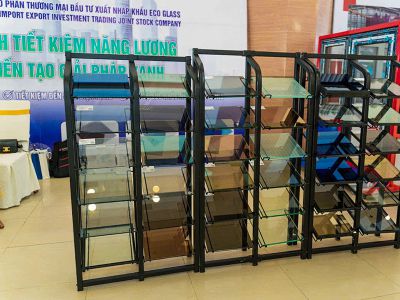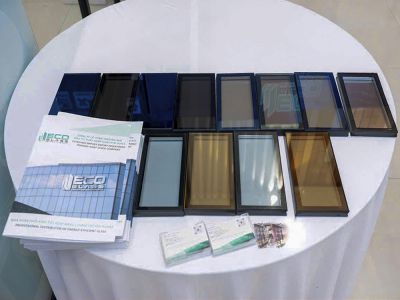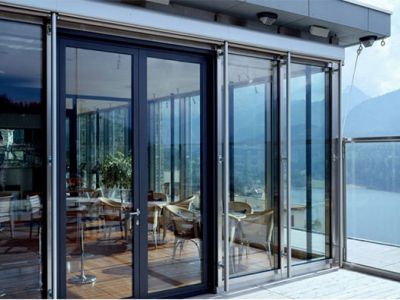In recent years, the use of glass in the field of construction and architecture has become increasingly popular. With aesthetic properties, safety and ease of construction, glass materials have become a suitable choice for open space design.
Construction glass is made from glass and comes in sheets with a thickness smaller than its length and width. This type of material is often used in many projects such as windows, doors, partitions, railings, stairs and any location that requires light and safety.
In particular, in spaces with limited area, especially in urban areas, the use of construction glass is very popular.

Tempered glass
Features
Tempered glass is processed by placing it on a conveyor belt and passing it through a furnace heated to about 600°C. The glass is then immediately cooled by an air blowing system, creating a surface layer that is more taut and intense than conventional glass. This significantly increases the force-bearing and impact resistance of the glass. When tempered glass is broken, it breaks into small particles, which does not cause dangerous sharp fragments. This helps minimize the risk of injury in case the glass breaks.
Tempered glass is also more heat resistant than regular glass. This allows it to be used in applications that require high temperatures such as ovens or fire glass doors. This line of glass has high transparency and flat surface, providing a bright and clear look. It can also be frosted or matted to create a decorative or privacy effect.
Application
Tempered glass is used in most types of projects such as: office buildings, public buildings, schools, hospitals, supermarkets, sports centers, houses,... used as glass walls , facades, partitions, railings, glass doors,...
Laminated safety glass
Features
By combining 2 or more glass panels bonded together with PVB film and absolute adhesion. When broken due to strong impact, the glass will adhere to the film and usually remain in the frame, causing no harm to people or property, minimizing the risk of injury from falling or splashing sharp edges.
Glass is resistant to penetration by people or outside influences. The soundproofing ability of the film layer helps prevent unwanted noise from vehicles.
PVB film has the ability to prevent ultraviolet (UV) rays from passing through it, so when using safety laminated glass, it will minimize the harmful effects caused by ultraviolet rays such as damage to fabrics, harmful effects. works of art and other harmful effects.
Application
Laminated safety glass is used for all types of projects such as: office buildings, public buildings, houses,... used as partitions, glass roofs, railings, glass doors,...
Boxed glass
Features
Boxed glass is made up of 2 or more layers of glass separated by a vacuum layer injected with inert gas between the layers of glass with a thickness of 5 to 10mm or more according to the requirements of the project, the aluminum frame contains the desiccant beads.
Boxed glass is made from high-quality materials such as tempered glass and bearing glass, helping it to withstand strong pressure and impact. Glass has good light transmission, helping the interior space more prominent and brighter. In addition, this glass line also has a beautiful and modern design, creating a highlight for architecture and interior decoration.
Application
Boxed glass has sound-insulating properties, so it is used mostly for types of projects that require strict control of temperature and noise.
Conclusion
Many high-rise buildings today are built in a way that eliminates walls and windows. Instead, the entire facade of the building uses an alternative glass frame system (window).






